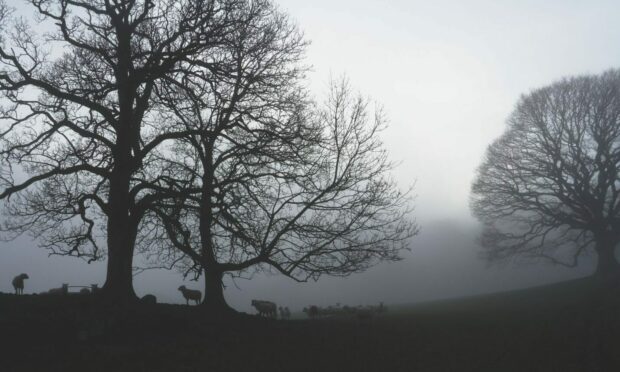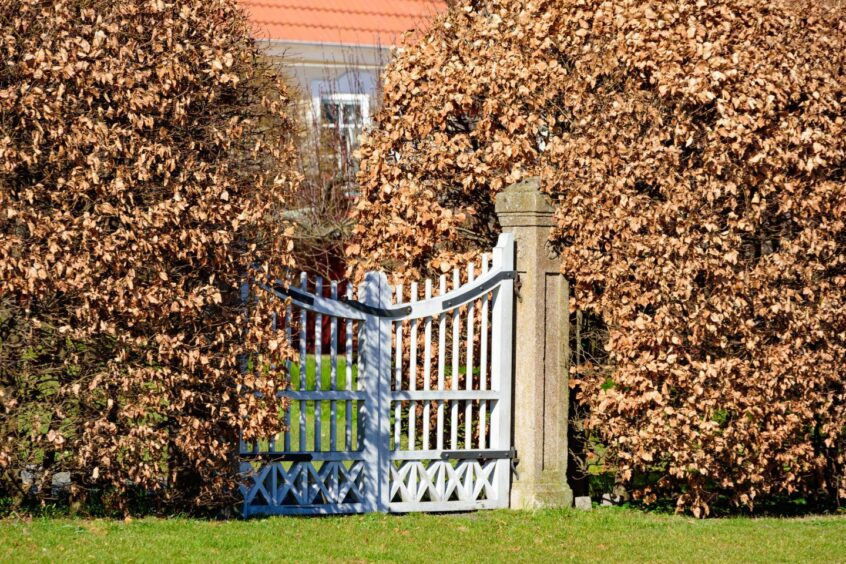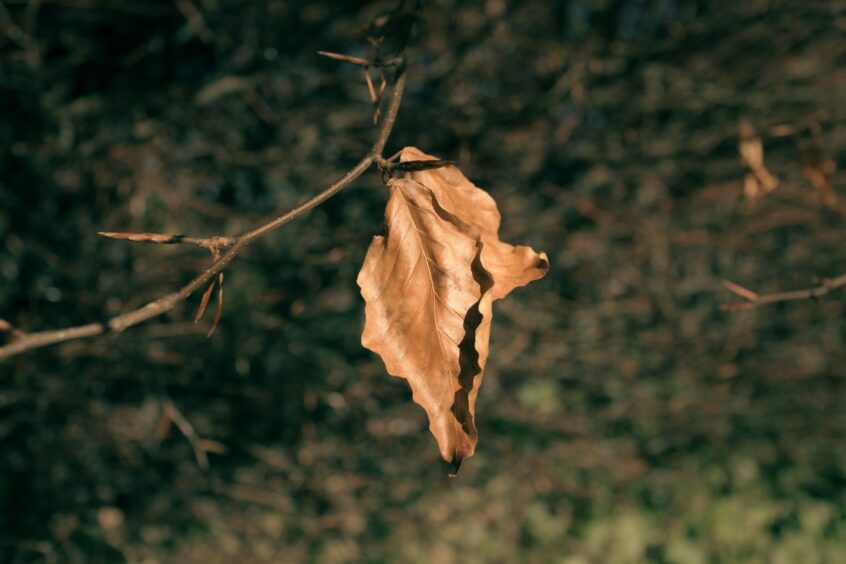As every parent past and present will understand, it feels like the vast majority of my free time is spent driving my kids to their various clubs and activities.
Even though it can feel like a full-time job, on top of a full-time working job, I still wouldn’t have my life any other way.
To be honest it does also have its advantages. They are both into playing football so Mrs C and I are having to travel around Fife, Tayside and Perthshire as we take them to their games, getting to enjoy some fine countryside in the process.
In vivid colour
The drive to Brechin recently featured patches of mist and fog. This dull light made the fiery autumn yellows and oranges on the beech trees stand out so much more.
I guess it was just one of those chance moments, the right weather conditions and the vivid foliage colour came together at the right moment. It really was beautiful to see.
When these things happen I’m learning to stop and appreciate them more. With the weather us gardeners have to contend with in Scotland we don’t know when these perfect moments will happen again.
The resilient beech
It made me take a closer look at the beech trees that surround my house, planted to form a hedge.
They are well and truly past this autumn peak now, and are brown in colour. This is how they will stay, leaves firmly attached on the hedge, until spring.
You’d think, like every other deciduous tree and shrub, once the colour has changed the leaves would fall to the ground. But with a beech tree pruned to make a hedge, the leaves stay attached over the winter until they are pushed off by the unfurling buds of the new growth.
Known as ‘marcescence’ it’s a clever little thing these trees do to protect themselves when in their juvenile stages, and which we gardeners use to our advantage.
The foliage when still attached helps to create a dense screen for privacy even during winter time.
National Tree Week
I don’t hide my admiration for trees at any time of the year but I celebrate them even more so now at the start of National Tree Week, an initiative set up up by the Tree Council to mark the start of the annual tree planting season.
Really, you can plant a pot-grown tree at any time of the year as long as the ground is ‘open’.
By that I mean you are able to comfortably dig and work the soil when it’s not waterlogged or frozen.
Due to the extra time and care required watering, feeding and potting on, growers understandably will increase their prices for all the additional work involved but come November, despite the gloomy weather, us gardeners get a spring in our step as we pick up trees and shrubs that wee bitty cheaper by buying bare-rooted stock.
They get this name as, when we receive them, they pretty much look like they are dead. Their foliage is withered and there is no soil at the bottom. Just bare and naked roots.
You could be forgiven into thinking you’ve been conned but supplying certain plants this way is something we can get away with whilst they are taking a well earned rest over the winter months.
As long as they are correctly planted swiftly on receipt, once spring arrives the plant will start functioning again as though nothing has happened.
The roots will start drawing in food and moisture from the soil and the sap will start flowing around the woody stem, encouraging the leaves to open on the tips of the branches. We’ll be given one happy plant.
Even better in bulk
If we’re only after the one then we may choose to shrug our shoulders and pay that wee bitty extra for a single plant.
However, when embarking on larger projects such as hedge planting where you need a specimen every 60cm/ 2ft, this is where money can be saved.
It may even mean we can afford a mulch to top dress the soil around the base of the hedging, increasing the chances of your new plants surviving.
Like with all plants the smaller they are they better it is for getting them to get established.
For hedging, a good size to buy is a height around 60cm/ 2ft, but they can also come in various sizes as big as 150cm/ 5ft.
When it comes to planting single trees as specimens the latter size is generally what I look for.
Although bare-rooted plants are not often seen on the display benches, have a word with the staff of your local garden centre, they may be able to help you.
Beautiful oak trees, sweet chestnuts, special varieties of beech, lime, birch, rowan and cherries can arrive barely looking like sticks.
It’s hard to imagine they will end up as majestic trees for many years to come and for future generations to enjoy.




Conversation